All products featured are independently chosen by us. However, SoundGuys may receive a commission on orders placed through its retail links. See our ethics statement.
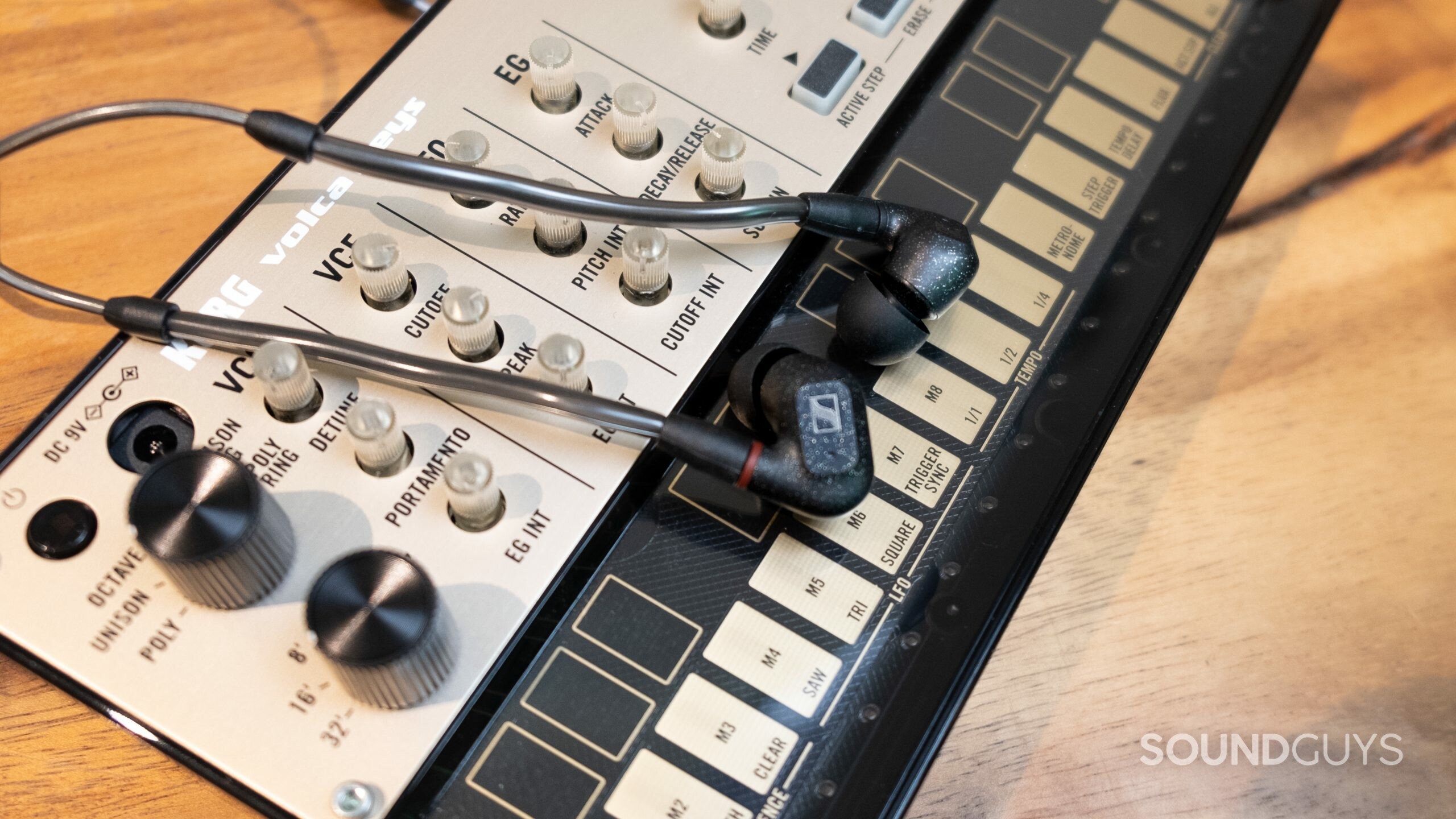

Sennheiser IE 300 review
September 6, 2022


Sennheiser IE 300
Is it a sign of madness to release a set of premium earphones in the 2020s with a headphone jack and no onboard controls? Truthfully, not everyone prefers a Bluetooth audio source. Sennheiser is stepping up with the IE 300, a portable set of premium earbuds with a good selection of accessories and features for music enjoyment. We spent a week with these portable in-ear monitors (IEMs) to help you decide if it’s the right set of buds for your needs.
Editor’s note: this Sennheiser IE 300 review was updated on September 6, 2022, to include the Shure SE215 in the Alternatives section and to update the formatting.
Audiophiles trying to keep costs down will appreciate that you get everything you need in the IE 300 box, but these earbuds don’t appeal exclusively to audiophiles. Anyone who needs an unobtrusive set of wired earbuds with few compromises will be happy with these MMCX connector earbuds. Even more specifically, those with hard-to-fit ears are sure to find the IE 300 has an ear tip and angle that will work for them.
What’s it like to use the Sennheiser IE 300?
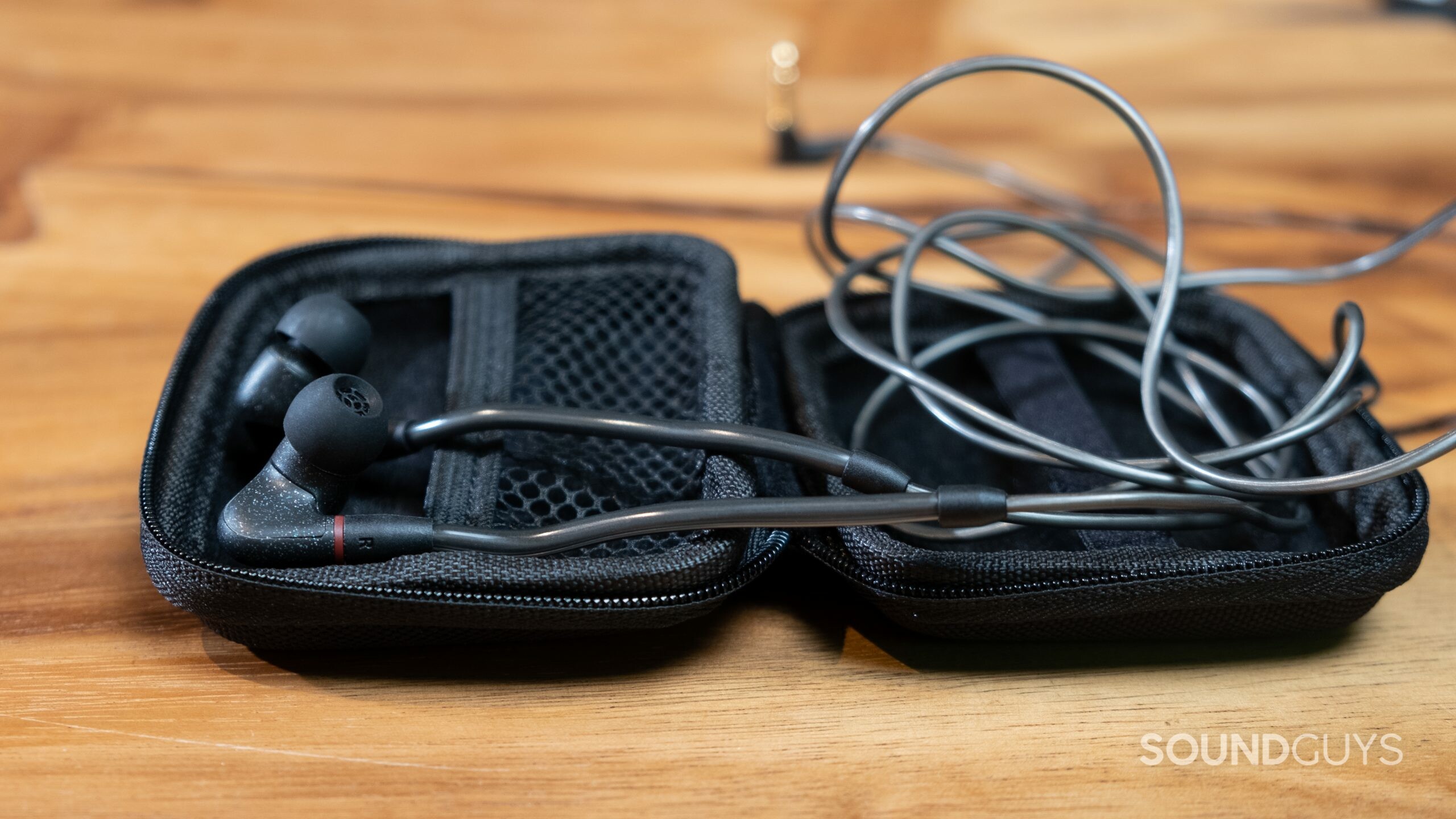
Delivered in a sizeable box, the Sennheiser IE 300 feels sturdy and premium. In a move to make the IE 300 appealing to both serious audiophiles and more casual listeners, the buds come in a matte charcoal color with white-ish flecks. It’s a bit 90s-flavored, but not obviously retro.
To get the best and most comfortable fit, take the time to adjust the IE 300. Try swiveling the buds to different angles and test the other ear tips, because the IE 300 rewards you for the effort. The pre-installed medium silicone ear tips are the most comfortable for me, however, I use the medium memory foam tips to better hear bass notes. Creating a seal over the ear canal is essential if you want to hear lower frequencies. The memory foam is better for establishing a seal, but it places fatiguing pressure on my ears after an hour—with the silicone ear tips, I can listen for hours.
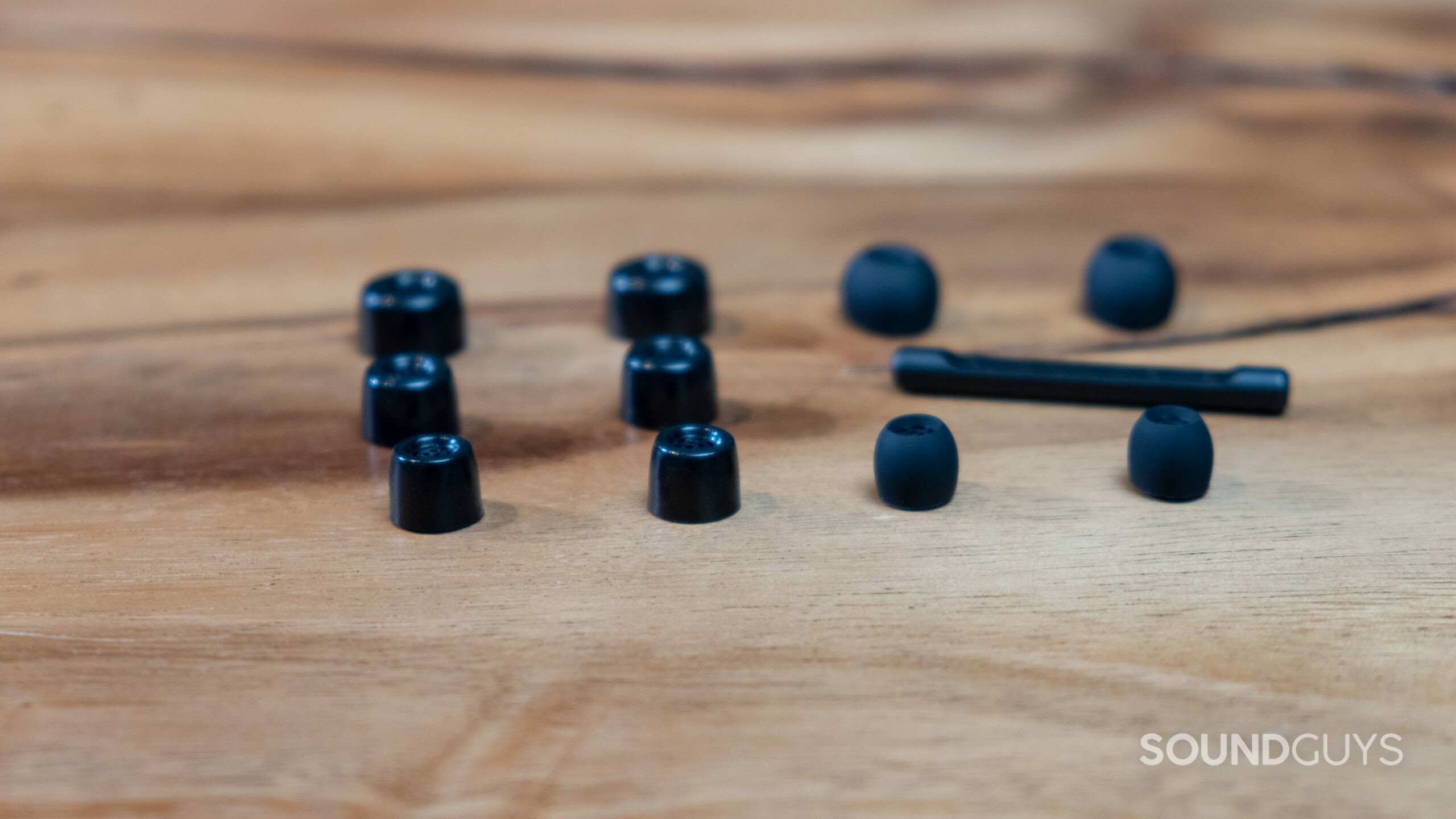
The cable is usually a weak spot in most wired earbuds. Sennheiser remedied this by constructing the IE 300 out of para-aramid, which you might recognize better by the brand name Kevlar. The material’s very high strength ensures you won’t rip these cables any time soon.
The cable is substantial and has a memory wire near the buds that wraps unobtrusively over your ears. Folks with glasses will find it comfortable during long listening sessions. This is also a detachable cable, so you can replace it if the internal wire quits on you. Plus, Sennheiser throws in a two-year warranty should anything happen.
No, while the IE 300 is well made with para-aramid materials, it does not have a an IP rating against water and dust. So you best keep it in a dry place free of dust.
How does the Sennheiser IE 300 connect?
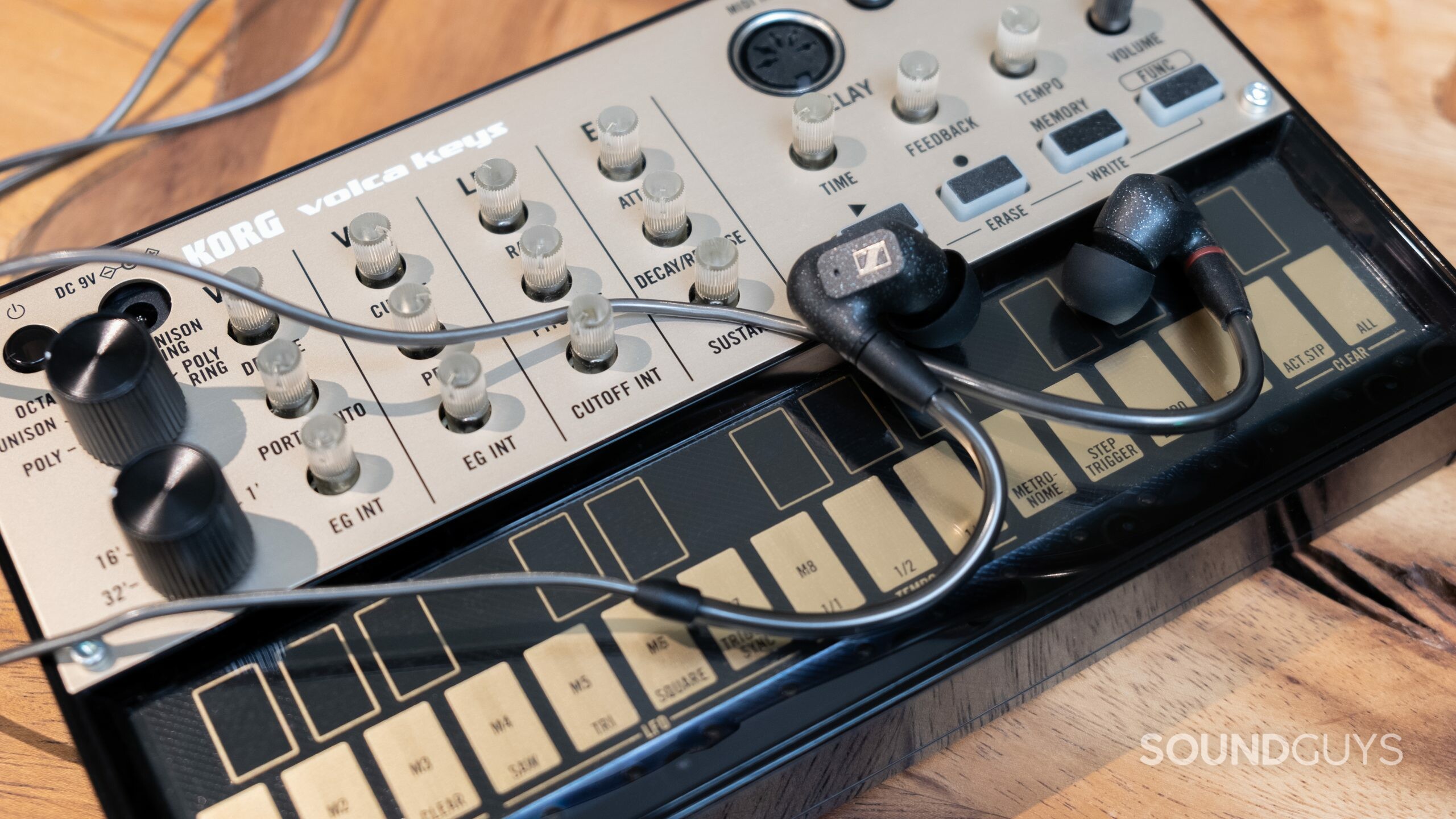
Connecting the Sennheiser IE 300 is great, you just plug the 3.5mm right angle jack into your audio source. You don’t get Bluetooth or app support, but the upshot of this is those old devices that only have headphone jacks become plug-in-and-go situations, like my Korg Volca Keys portable synthesizer. The earbuds are lightweight and come with a pretty pocketable zip case, which is functional and utilitarian.
Does the Sennheiser IE 300 block noise?
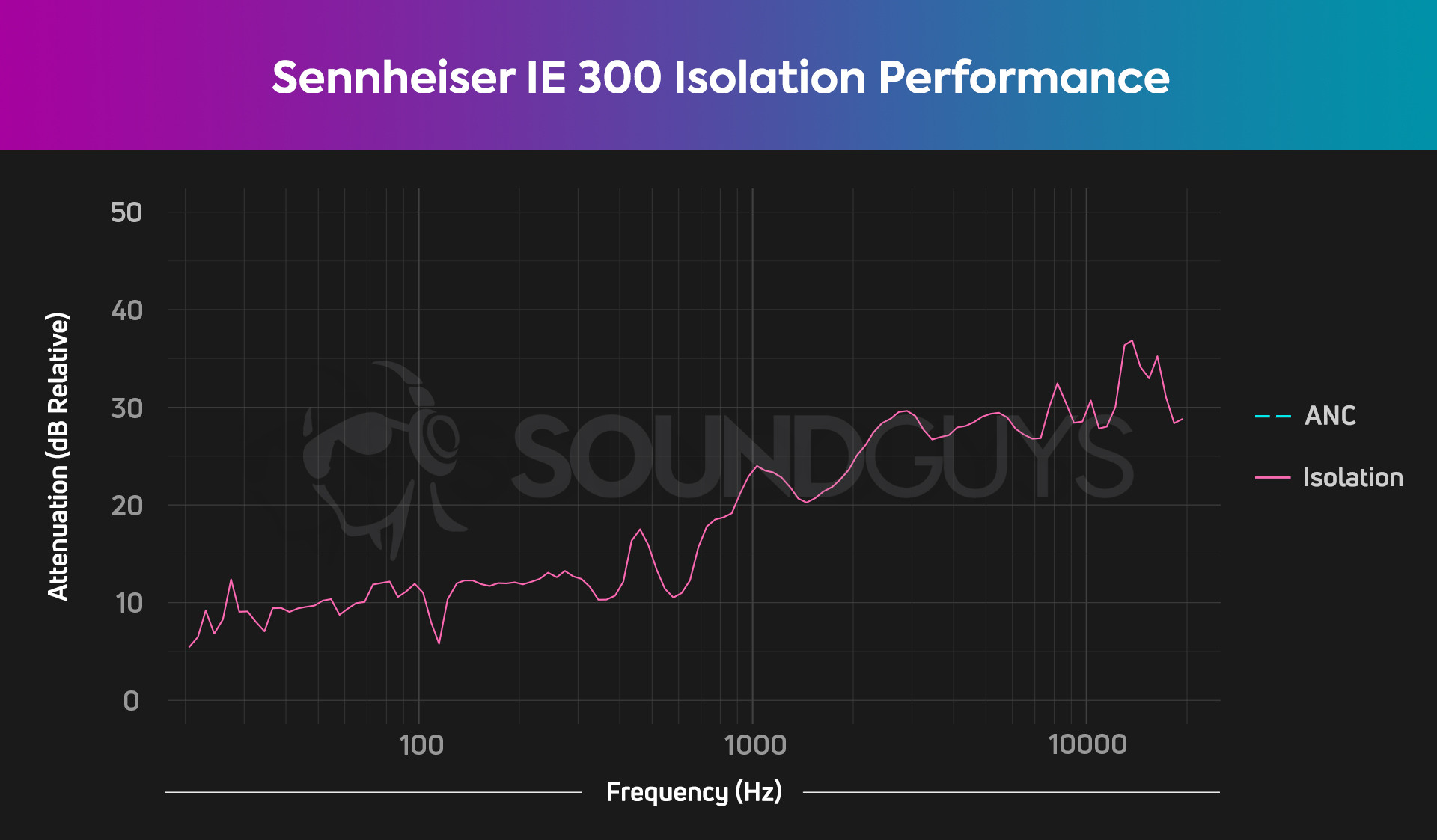
For a small set of earbuds with zero noise canceling, the passive isolation on the Sennheiser IE 300 is quite good. This is especially true if you’ve fitted it with the memory foam ear tips to really seal and dampen external sounds.
Isolation performance like this might not supplant noise cancellation tech, but it can attenuate bass frequencies by up to 10dB, cutting the loudness of some sounds in half. Generally, lower frequencies are the ones that active noise canceling (ANC) aggressively targets. Meanwhile, the IE 300 suitably dulls incidental clangs in the high frequencies. All in all, short of just buying something with ANC, you’ll quiet the world a fair amount with the IE 300.
How does the Sennheiser IE 300 sound?
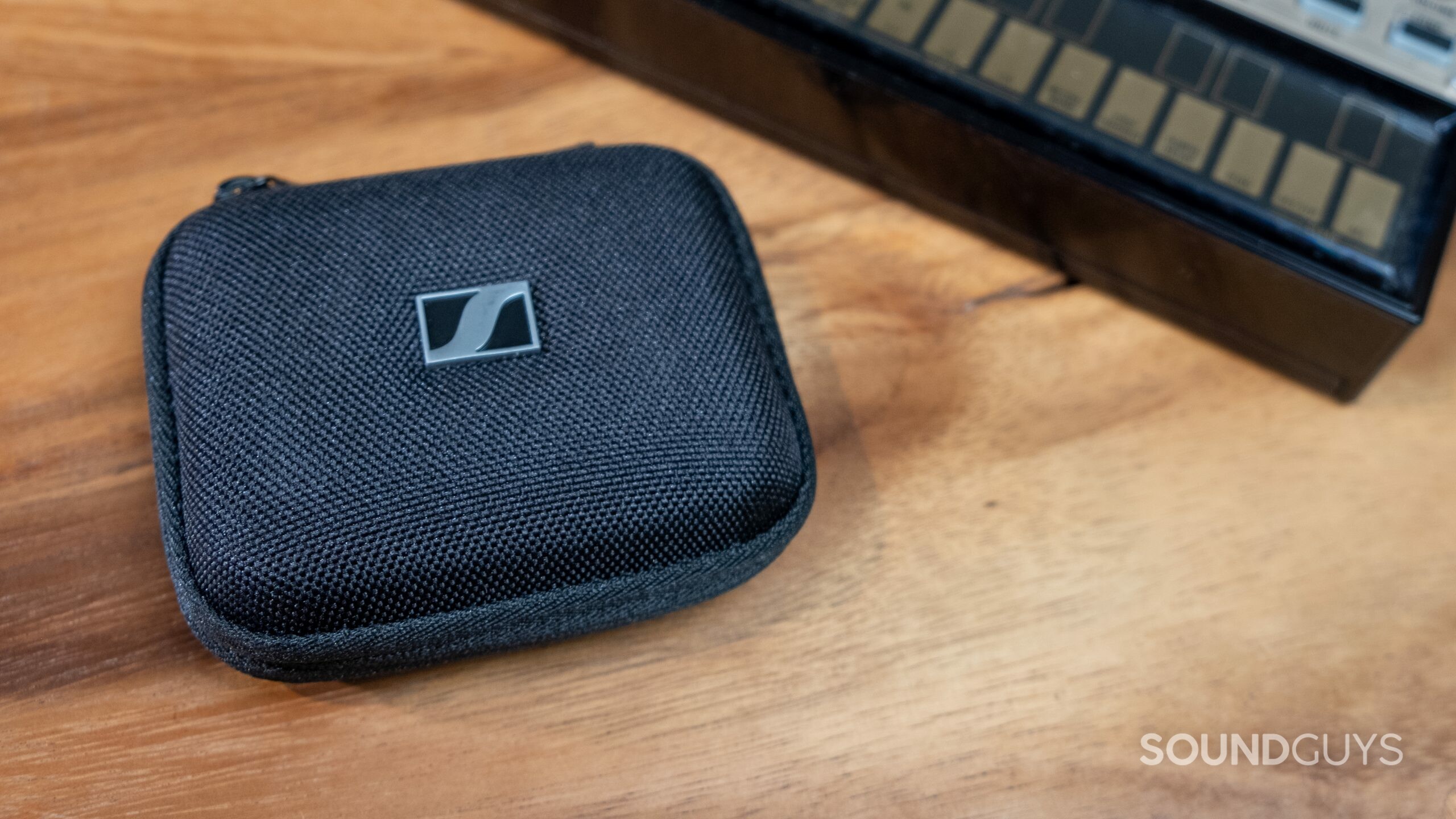
A premium set of in-ears like the IE 300 takes some getting used to with its unusually under-emphasized treble response and gently amplified bass response. You might find some of your favorite tracks are in fact full of warts. If you’re coming from standard corner store earbuds, you might also find new music parts that you were missing in old songs.
The extra wide band transducer (XWB) is a 7mm dynamic driver that purportedly reduces non-linear distortion—it’s meant to help the IE 300 clearly reproduce notes higher than 10kHz.
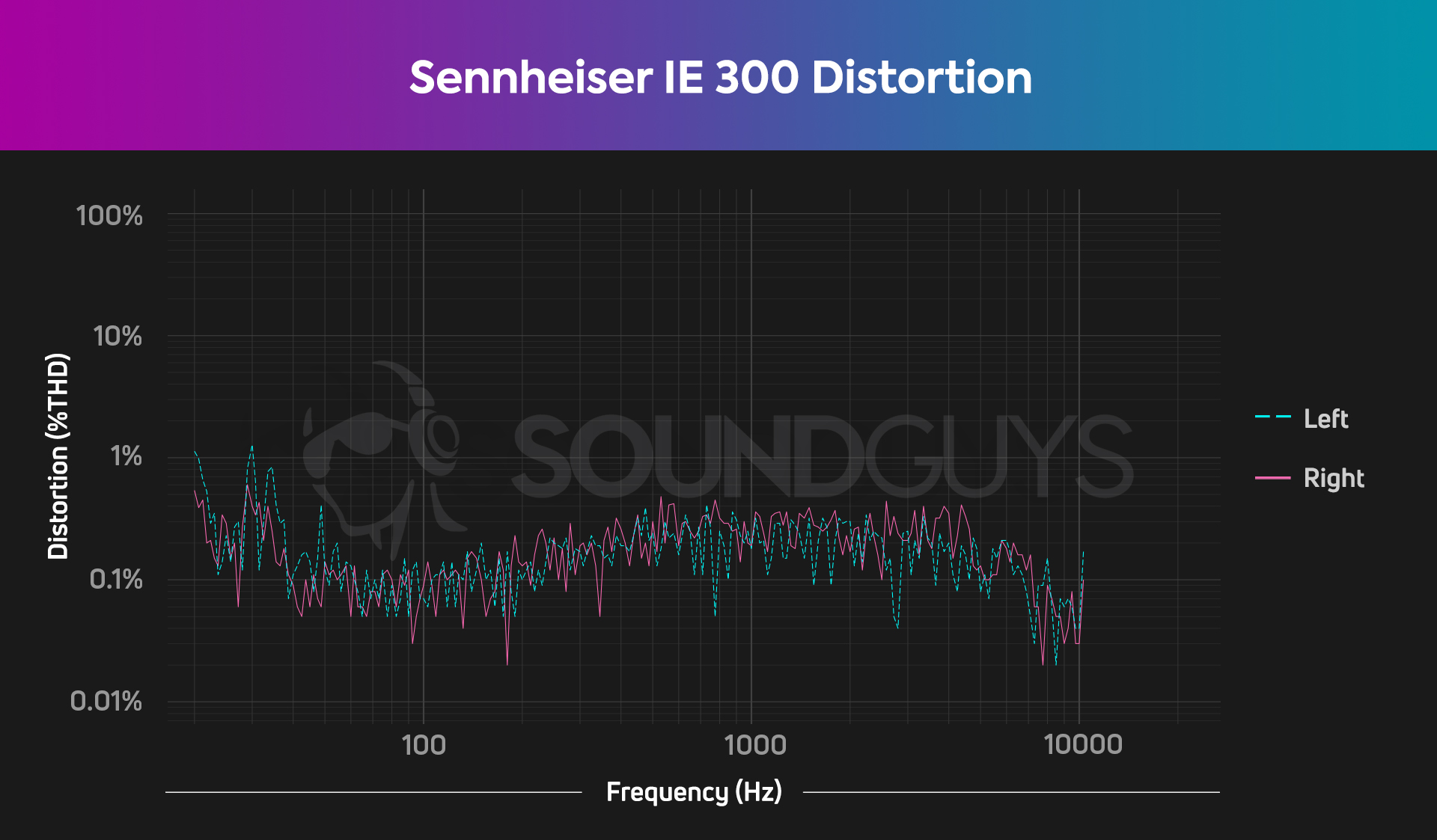
Our testing confirms that the IE 300 is low distortion at < 0.08 % (1 kHz, 94dB). This means that with a 1kHz tone played at a 94dB(SPL), the maximum amount of distortion that may occur is a measly 0.08%—hardly perceptible. You’re unlikely to hear this anyway given how 94dB is quite loud, and not a volume level you want to expose your eardrums to often.
Highs, mids, lows
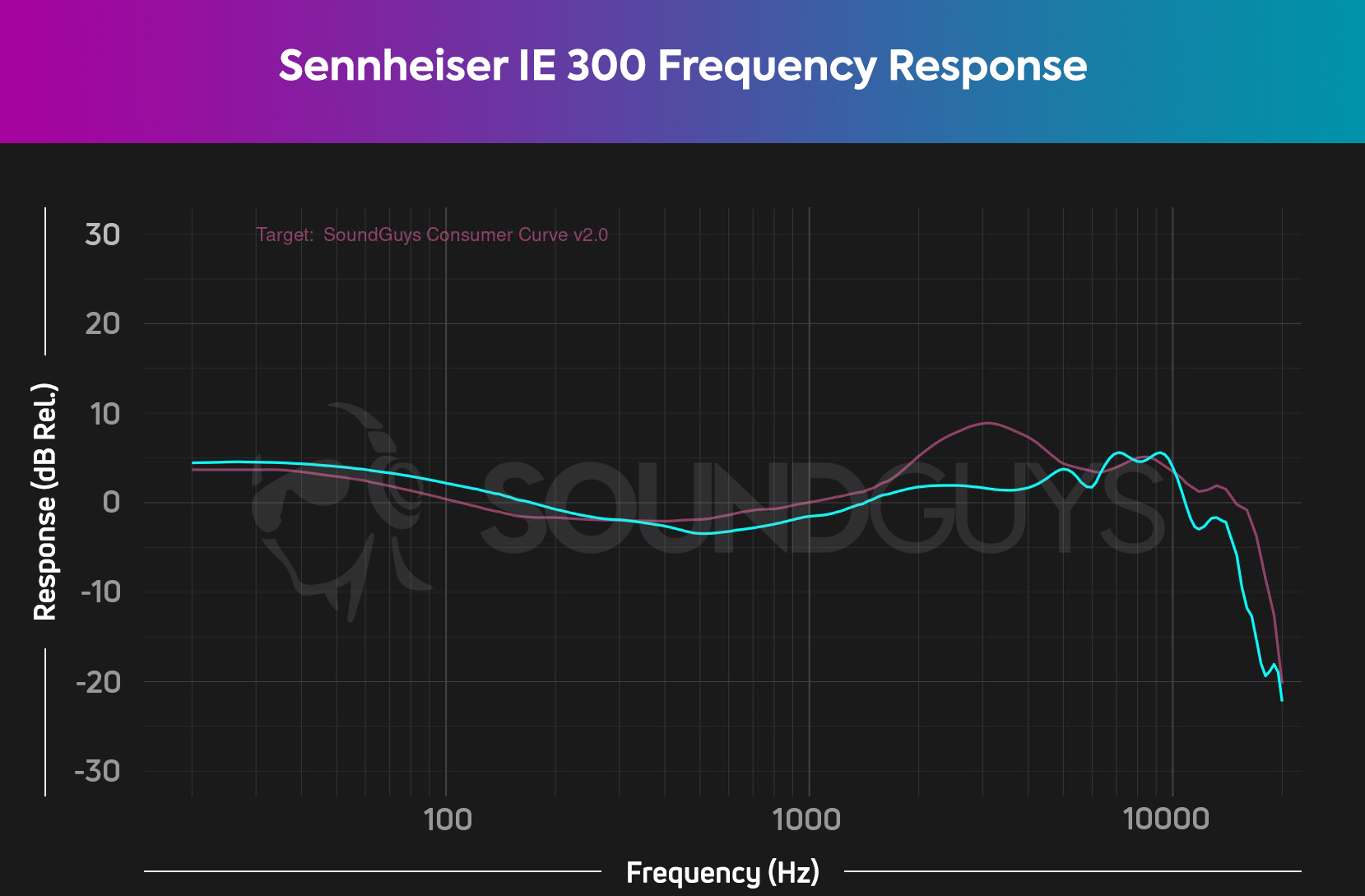
If there is one weakness on the IE 300, it’s that lower notes tend to overwhelm some female and falsetto vocalists, due to the under-emphasized 2-6kHz range. The vocal-heavy track Nawlins by Emma Kupa sounds unpleasant on the IE 300, and Kupa’s voice is hard to hear clearly. The earphones struggle to reproduce Diana Ross and The Supremes’ usual vocal detail in Stormy, particularly when the song ramps up at 1:40. When Diana Ross sings in a higher register, it’s hard to hear her voice through the horn section with the IE 300.
However, the flipside to this is that I never feel any of the ear-piercing fatigue that amplified high frequencies can cause. The hi-hats in Stormy, chk-chk with clarity because they’re low pitched for hi-hat cymbals, but higher frequency cymbals can be difficult to hear well. The under-emphasis that occurs beyond 10kHz results in a sense of diminished clarity, hence Emma Kupa sounding inaccurate, and crash cymbals lacking that high-frequency loudness and detail.

The mids stick reasonably close to our target curve, reproducing lower strings and Karen Dalton’s vocals in Something on your Mind accurately. The IE 300 under-emphasizes the treble response which makes the IEMs sound slightly more studio-oriented than most consumer-friendly headsets. The sound profile leans towards “neutral” in the mids.
If you’re a bass head, you might want more, but the IE 300 is reasonable with its bass, closely mimicking our chart. Bass is present but not over amplified. Patience by Tame Impala has a low-end pulse throughout the track, which sounds exaggerated on most earphones. With the IE 300, I hear the rest of the song, and the bass pulse is still audible.
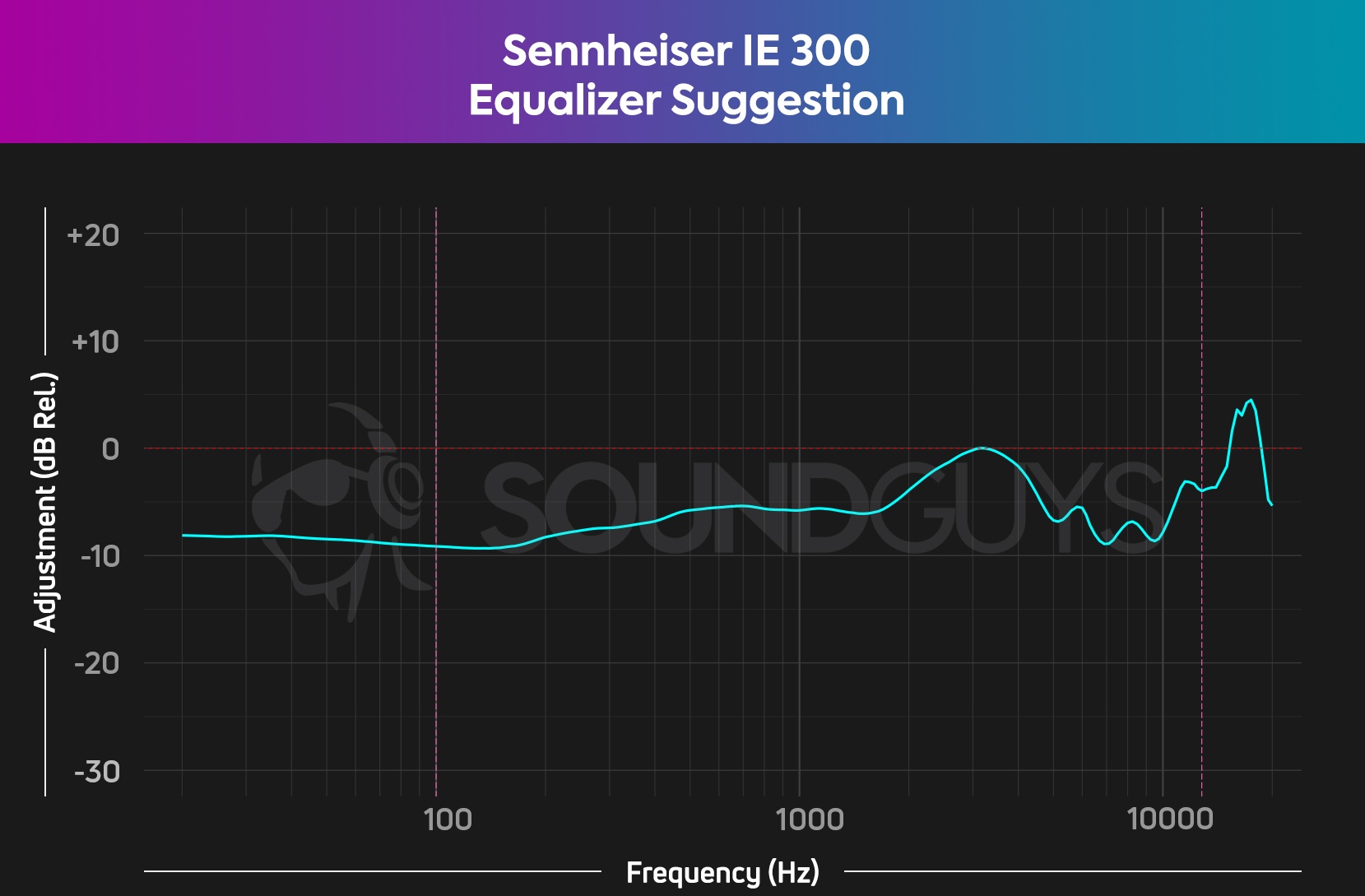
To be clear, for the most part the IE 300 has a pleasing sound. For the person looking to play with that a little more and dial in the EQ, the above chart is a great place to start. For more advice on how to equalize your IE 300, we have some suggested apps too.
Should you get the Sennheiser IE 300?
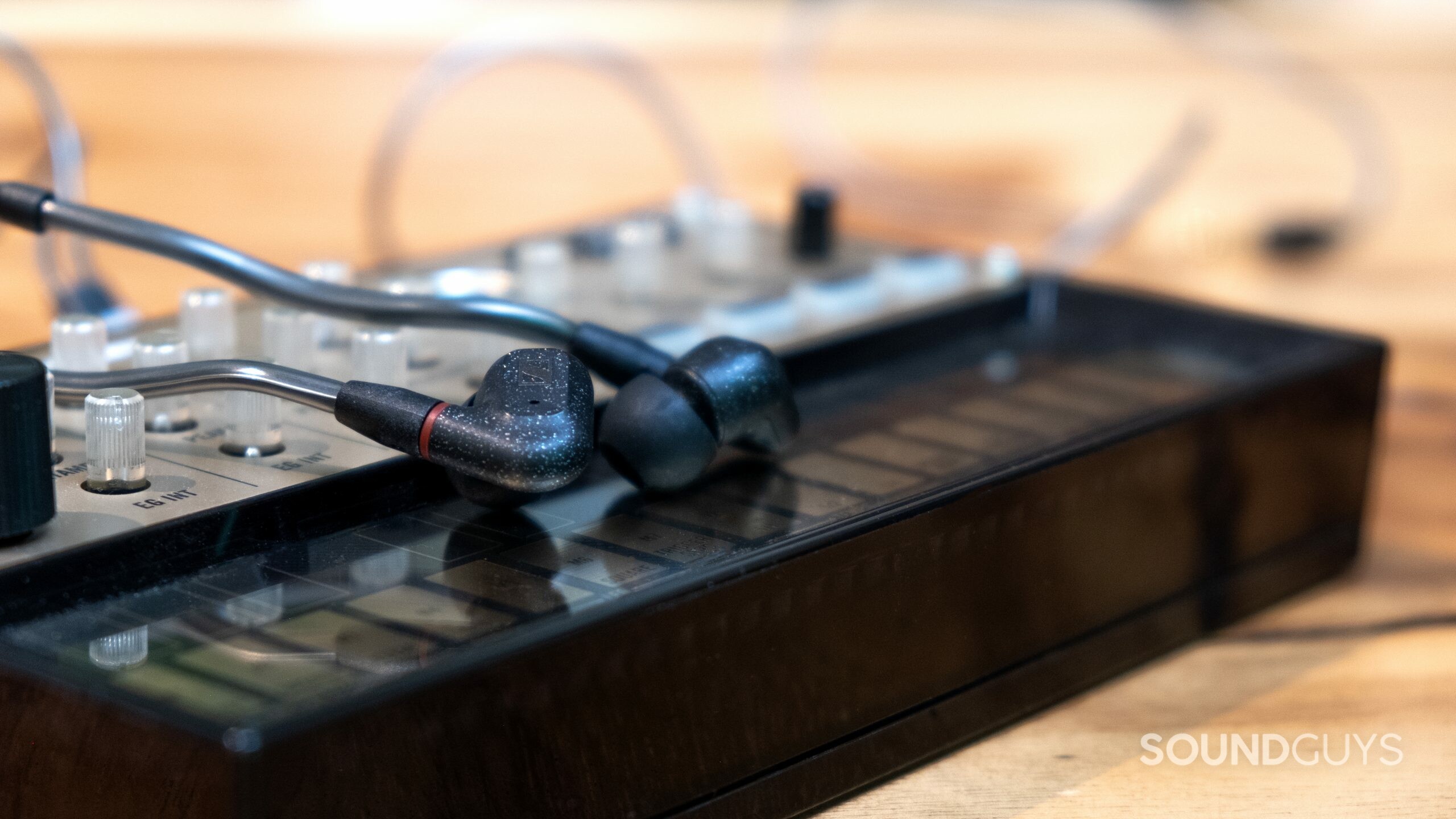
The Sennheiser IE 300 is not cheap. Sitting coolly at a hair under $300, it does not come with an in-line remote or a microphone. You don’t get any access to virtual assistants. The sound profile is not exactly flawless, but it has impressively low distortion for such a small 7mm driver. The IE 300 provides an audio-only experience and Sennheiser isn’t pretending to offer anything else. It’s not going to appeal to all listeners, and folks motivated mainly by convenience ought to skip it and try something else.
Asking for perfection might be the problem with the IE 300. Sennheiser’s copy dresses up the IE 300 as if it’s the best set of in-ear monitors around; this can lead to initial disappointment. However, The IE 300 sits in a sweet spot for the price. At a certain point as a listener, you encounter diminishing returns through spending more and more, and this is miles better than cheap earphones.
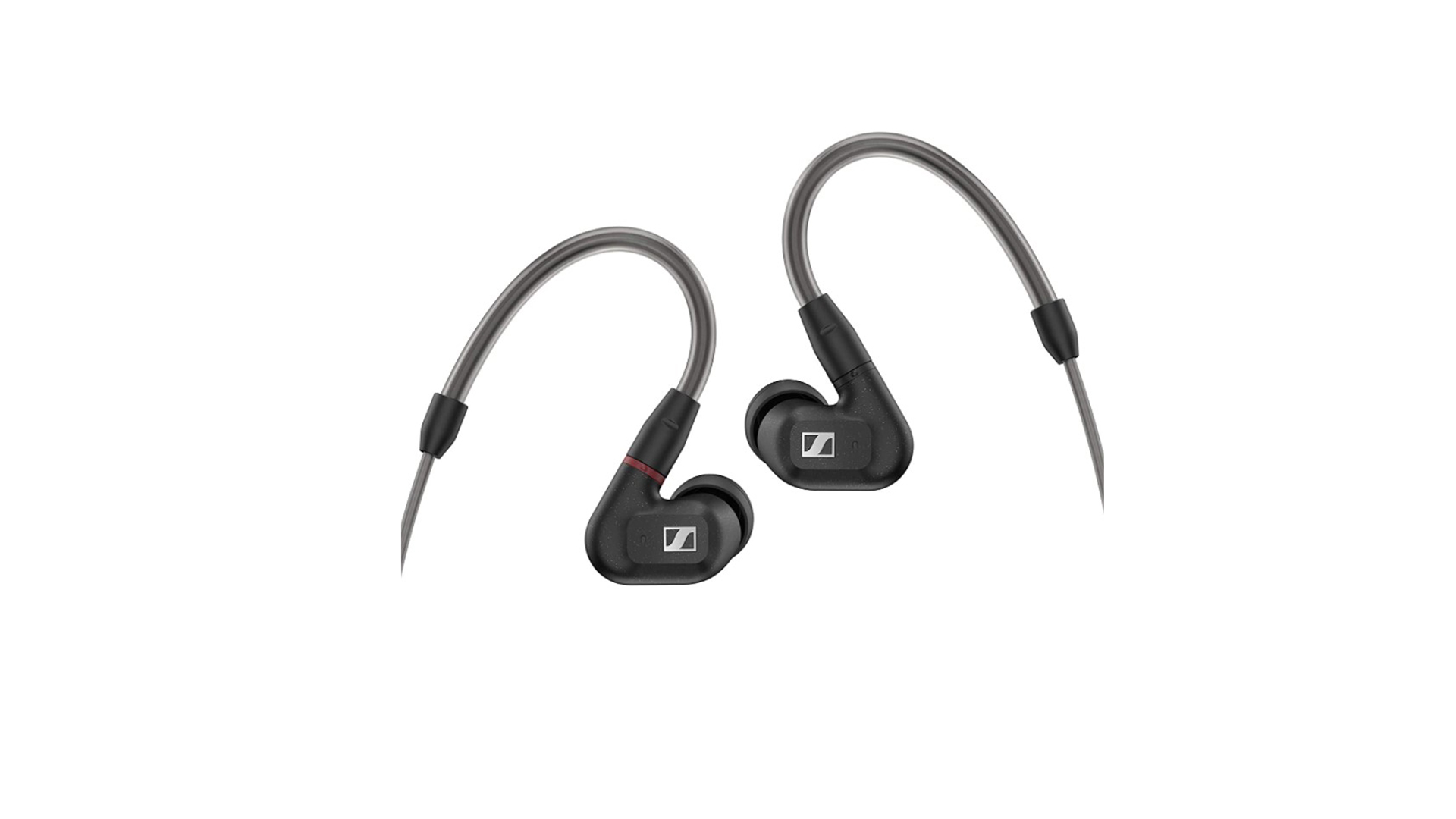
With the IE 300, you get really great construction, though no IP rating, which might be nice in rainfall on a walk. It fits comfortably, and the great isolation and discreet size mean you can take it on the bus. Having to use your device to control playback may be a bit old school, but it’s hardly a sacrifice for excellent sound quality. So yes, buy these earphones if you intend to listen to music without distraction and can afford it.
What should you get instead of the IE 300?
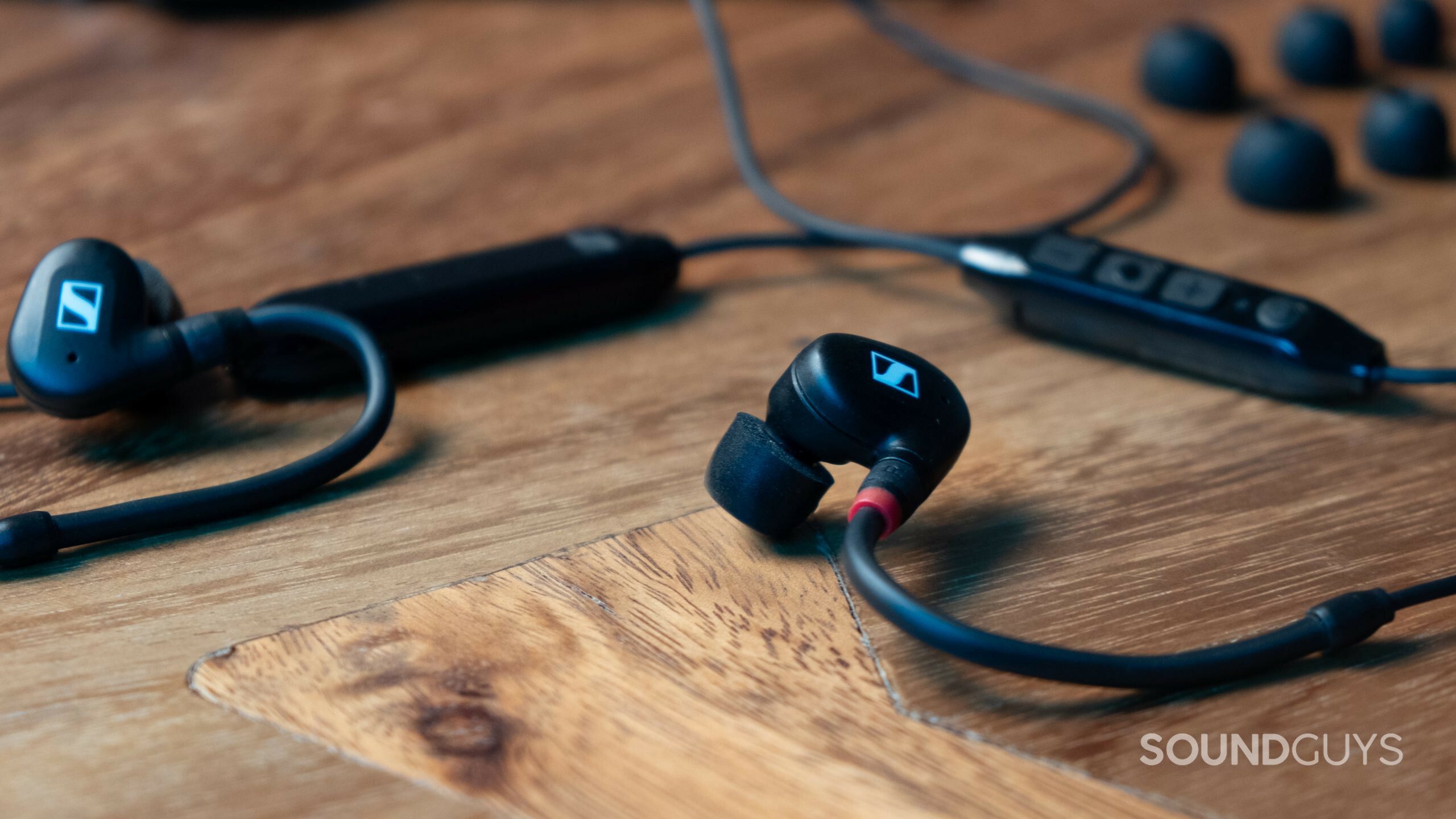
Somehow the market for wired in-ears is both crowded and empty, but we’ve got a pick for every price point. The Shure SE425 offers many of the same features as the IE 300, with a different flavor. At about half the price of the Sennheiser IE 300, the Final Audio A4000 presents as an underdog with a lot of potential, similar accessories, and strong backing of fans.
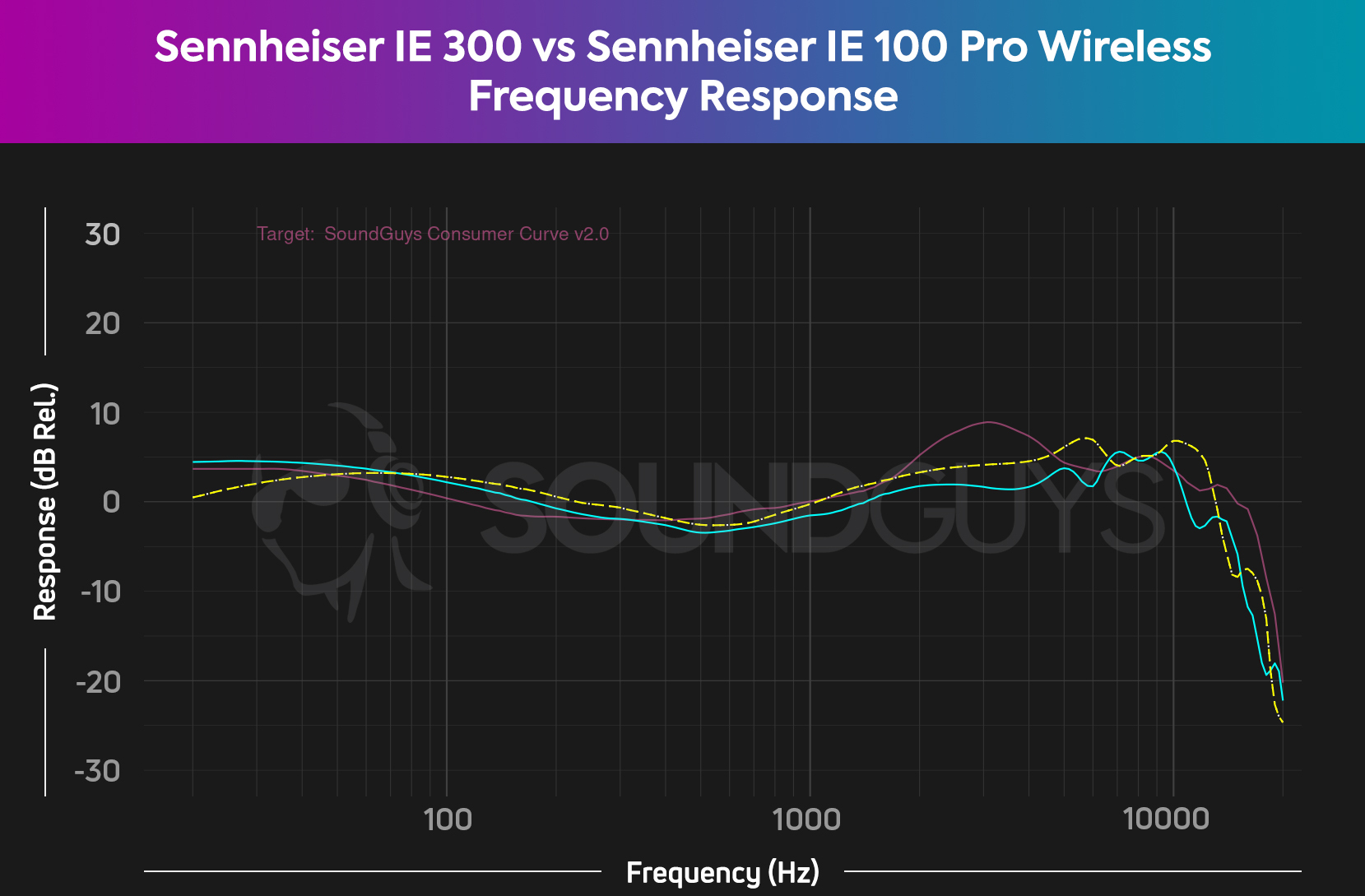
Listeners who want to stay within the Sennheiser family while sticking to a reduced budget should look into the Sennheiser IE 100 PRO Wireless. With this bundle, you get the IE PRO BT Connector, which supports SBC and aptX streaming. Its frequency response is also pretty similar at about half the cost. If you own other Sennheiser MMCX earphones, you can hook them up to this module for wireless playback. You also get a conventional wired connection.
Big spenders may be tempted to spring for the Sennheiser IE 900, the company’s premium IEMs targeted at serious audiophiles.
What are some more affordable alternatives?
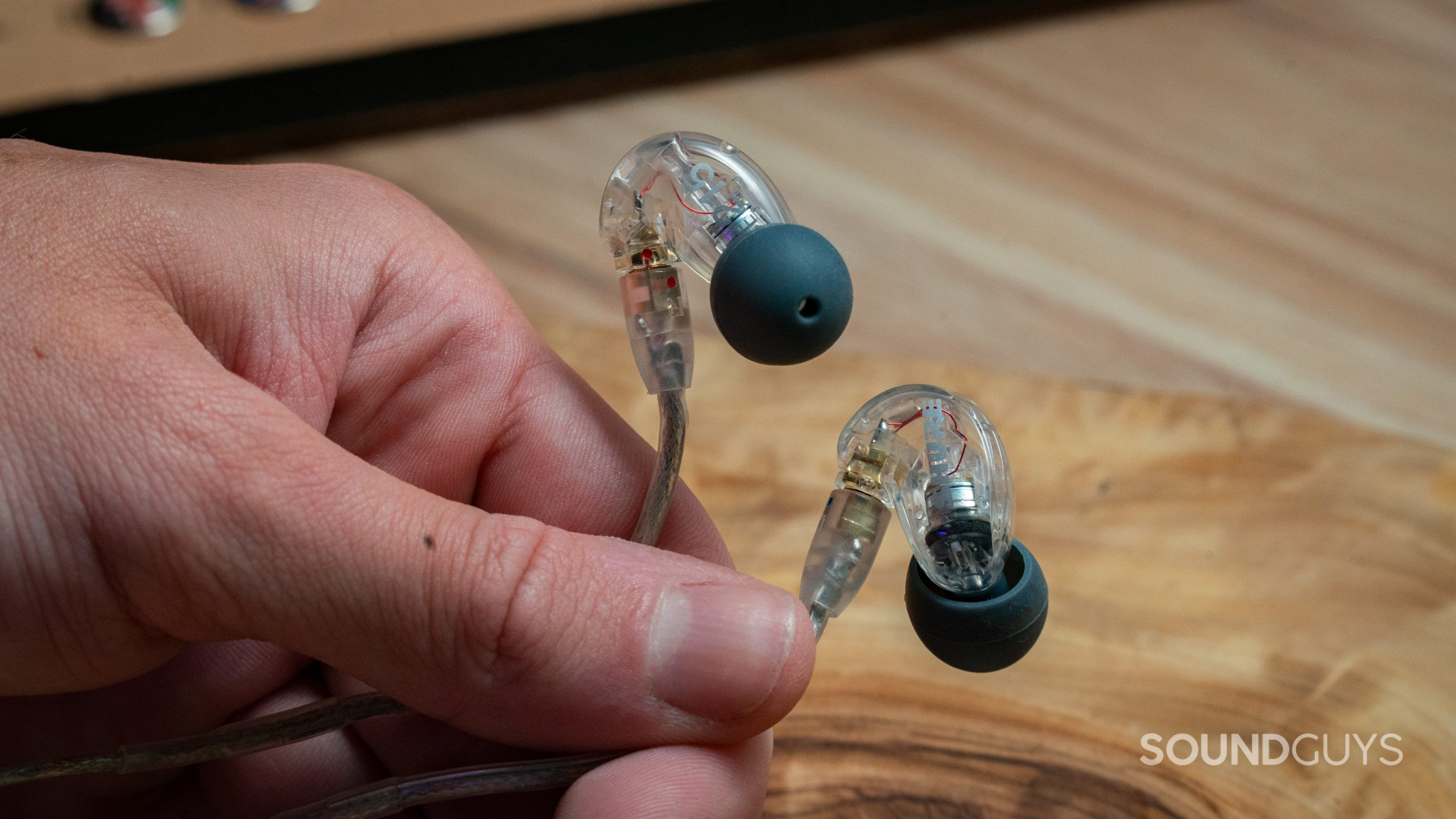
If you want a great headset at a reasonable price, check out the Shure SE215 in-ears. This pair of earbuds connects via detachable MMCX cable and works with any device, so long as it has a headphone jack. Even if your phone doesn’t have a headphones jack, the SE215 is a low-power set of buds, so a standard USB-C or Lightning adapter will do. With some of the best isolation on the market, the SE215 operates akin to a pair of noise canceling earbuds. The isolation is so good that it exceeds the performance of many ANC earbuds. For $100 USD, the SE215 sounds like a great purchase to us.
For budget-conscious consumers that want good in-ear buds, pick up the JBL Quantum 50 for only $30 USD or so. It sounds great and feels comfortable though, of course, the build is pretty plasticky with little in the way of replaceable parts. It exudes cheap and cheerful, but the Quantum 50 sounds good. People who want a studio style sound on a very tight budget should consider the TIN HiFi T2. For the price, it supplies a flatter frequency response, memory foam ear tips, and pretty low distortion. However, the fit may be kind of clunky for some ears.
Frequently asked questions about the Sennheiser IE 300
Sennheiser touts the IE 300 with its German-made 7mm XWB driver will provide a “natural, balanced sound,” though the box also says in small print “Made in China.” To be clear, Chinese manufacturing is completely fine, and most headphones are made in China these days, many of which are on our best lists. German manufacturers also design and make great audio equipment.
However, some might be caught off guard after realizing that the earphones are made in China. It appears that Sennheiser is playing both sides by using mainly Chinese labor, but advertising German manufacturing. Suggesting that Sennheiser is not alone in these practices does not make it right either.
If you are paying a premium price, surely you want to preserve your in-ear monitors. Replaceable parts like MMCX cables help keep your wired buds in working order. It’s also more environmentally friendly to avoid batteries.
Sennheiser helps you out by including a cleaning tool with the IE 300. Use it to remove debris gently, and be sure to remove the ear tips just to be safe when clearing away ear wax. Because the IE 300 does not have an IP rating against moisture, consider yourself cautioned against using any water to clean the earphones. If you must involve water, use a swab, rather than dunking the buds.
Thank you for being part of our community. Read our Comment Policy before posting.